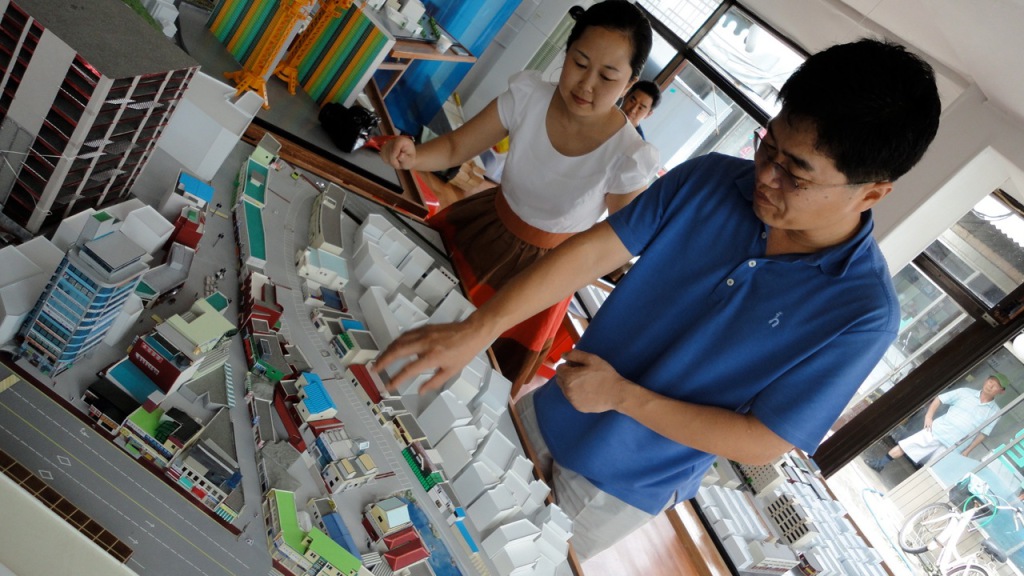Ten questions and a Bill of Rights for Neighborhoods
In 2010, five districts of Anyang (Korea) were slated to be demolished and become future redevelopment projects. m7red, in collaboration with Teddy Cruz and Kyong Park, and framed within APAP Project, started a process of collaboration with the University of Anyang and inhabitants of the districts to perform preliminary documentation and research, give seminars, and build 3D models of the neighborhoods. These models became the mediating tools for a series of conversations with community representatives and other actors involved in the redevelopment process.
The models became the activists’ voices from these disappearing districts, enabling the recognition of the many ways in which these existing neighborhood spaces perform across social and economic exchanges. Since a neighborhood is the physical manifestation of a community, these models argue that the future new community of Anyang depends on the acknowledgement of these existing districts’ environmental and social value as the basis for imagining the future neighborhoods of Anyang. These conversations formed the script for a video culminating on ten main questions that anticipated a Bill of Rights for the Neighborhood in Anyang. This video documentation accompanied the models as they traveled during the exhibition period of APAP through a series of places and institutions involved in matters of urbanization in Anyang.
The questions were the following:
- How to learn from the success of existing spaces before erasing them?
- How to determine what is valuable to a community besides real estate: memories, life styles, shared spaces, privacy, small markets?
- How to transform neighborhoods instead of replacing them?
- How to improve older neighborhoods by incrementally introducing new support infrastructure?
- How to enable small housing additions and extensions?
- How to develop the city at different speeds of growth?
- How to enable the coexistence of diverse housing economies?
- How to support the mixture of large and small environments?
- How to include spaces for social and economic entrepreneurship?
- How to involve communities in urban redevelopment?
Credits:
- The Future Neighborhood: Conversations on Coexistence. Concept: Teddy Cruz + Mauricio Corbalan. Production: Urban Information Engineering Course of Anyang University. Presented in APAP Project, Anyang, Korea, March – August 2010.

